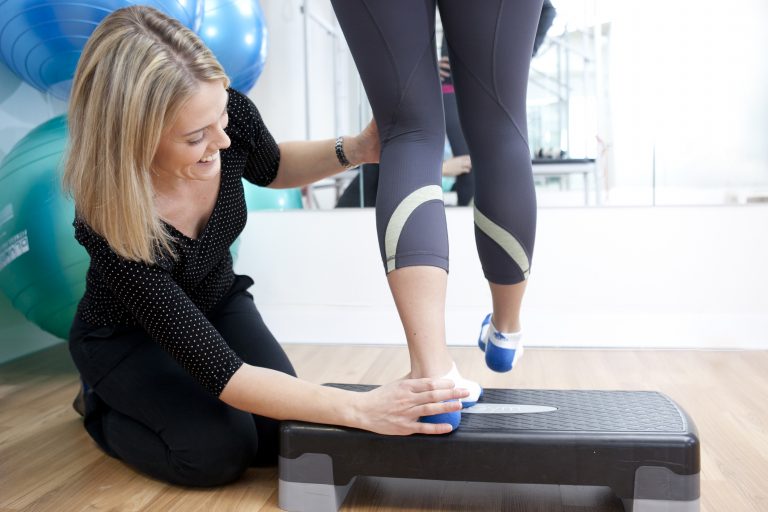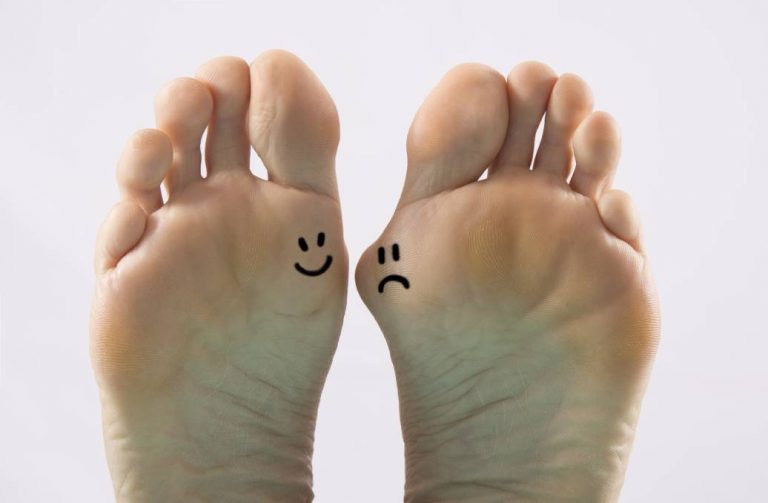
How can a podiatrist help me?
Is foot pain preventing you from getting through your normal daily activities? Are you having trouble playing sport and completing exercises you usually find easy? If this sounds familiar, our podiatrists are here to support your recovery and pain management.
We recommend making an appointment to see one of our podiatrists if you are experiencing foot pain and notice it is affecting your lifestyle. Our role as podiatrists is to assess, diagnose, implement a strategy, and empower you to act on this strategy at home, so you can get back to living, working and exercising at your best.
Common conditions we treat
- Achilles tendon pain: Can be caused by a sudden strain/tear or an overuse injury. The Achilles tendon is the band of tissue that connects the calf muscles at the back of the lower leg to your heel bone. Typically involves pain, stiffness and at times swelling in this area of the foot.
- Ankle sprains and knee pain: pain following rolling, twisting or turning the ankle in an awkward way. Knee pain may involve a ruptured ligament or torn cartilage causing pain in the knee. The ankle and knee can also be prone to overuse injuries related to repeated ankle sprains, or angulation at the knee causing ITB running related knee pain, ligament strain, patella tracking issues or cartilage damage.
- Arch pain: pain in the foot between the heel and ball of the foot or across the bottom of the foot. This is often associated with plantar fasciitis, however can also involve tendons of the foot and ankle.
- Bunions: painful swelling of soft tissue on the first joint of the big toe, with noticeable bone enlargement at the base of the big toe.
- Big toe pain (MTP joint pain): discomfort, pain or inflammation resulting from misalignment of the joint surfaces with altered foot biomechanics (movements).
- Corns and calluses: repeated pressure or friction on an area of skin causes the skin to die, resulting in the formation of protective hard surfaces on top of or between the toes.
- Diabetes foot complications: including diabetic neuropathy, which is a lack of feeling in the foot due to damaged nerves, often resulting in the inability to feel heat, cold or pain in the foot.
- Forefoot pain or injury: including injuries to the long metatarsal bones of the toes, and pain inside, outside and under the ball of the foot.
- In-grown toenails: a toenail that has grown into the flesh of the foot causing pain.
- Osteoarthritis of the foot or ankle: a degenerative joint disease, the gradual wearing down of the bones that form a joint in the foot and ankle.
- Mid-foot arthritis: discomfort, pain and inflammation aggravated by standing or walking, and tenderness around the affected joints in the foot.
- Plantar fasciitis (heel pain or injury): inflammation of the fibrous tissue along the bottom of the foot connecting the heel bone and toes, commonly causing intense heel pain.

Our podiatry processes
We offer a holistic patient journey which typically follows an eight-week timeline. This means we’ll take the time to establish a detailed understanding of your unique context and experience. This will allow us to identify your pain triggers and the best way forward. Our priority is to ensure you leave our clinic feeling better than when you walked in.
Following our initial consultation, our next step is to perform a bio-mechanical assessment to identify any movement patterns that may exacerbate the injury.
This might include social exacerbators, such as your usual 5km run or keeping up with your kids at the park. Or, it may include mechanical factors, such as reduced strength in specific parts of your foot and ankle.
Possible next steps
After your biomechanical analysis, we will identify contributing factors to your pain, such as significant deconditioning or lack of strength or control. If this is the case, we may recommend Physiotherapy in addition to providing home exercises, footwear advice and/or orthotics. We partner with Pure Physio to achieve amazing outcomes.
Depending on the severity of the issue being managed, we may engage with Melbourne’s leading orthopedic surgeons in their process to provide you with a greater understanding of your treatment options, both surgical and non-surgical.
If you are experiencing any of these foot conditions, we recommend making an appointment with one of our podiatrists to support you on your journey to recovery.
